SSC delivers 1st USSF WSF-M satellite to Vandenberg SFB for launch
Space Systems Command (SSC) has successfully delivered the U.S. Space Force (USSF)-62 Weather System Follow-on – Microwave (WSF-M) Space Vehicle (SV) from Ball Aerospace, Boulder, Colorado, to Vandenberg Space Force Base, California, where it will be processed at the Space Vehicle processing facility.
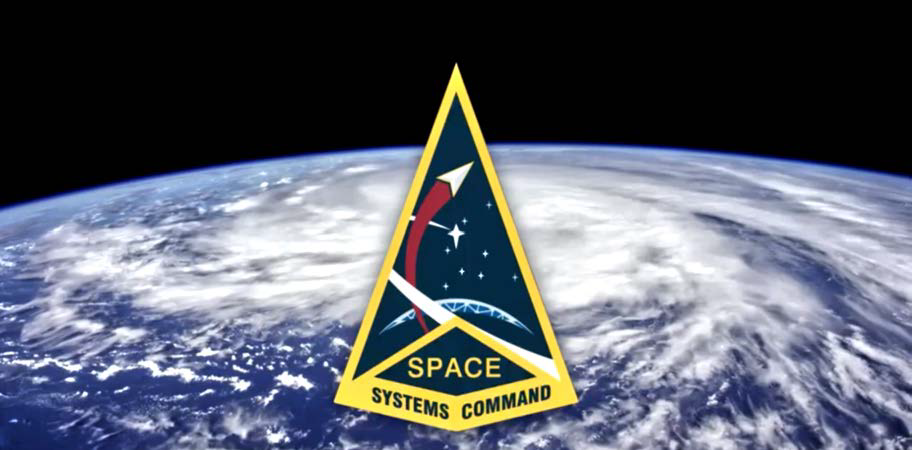
The satellite will undergo a series of post-shipment functional testing, followed by the loading of onboard propellant. After accomplishing these vital testing procedures, the WSF-M satellite will enter the encapsulation phase, after which the payload will be horizontally integrated with the SpaceX Falcon 9 launch vehicle before its voyage to space projected for late March.
Ball Aerospace was responsible for designing, building and integrating the spacecraft bus and ground data processing software. The satellite also features a government-built Energetic Charged Particle (ECP) sensor that will provide space weather measurements. Photo of satellite being moved to transport is courtesy of Ball Aerospace.
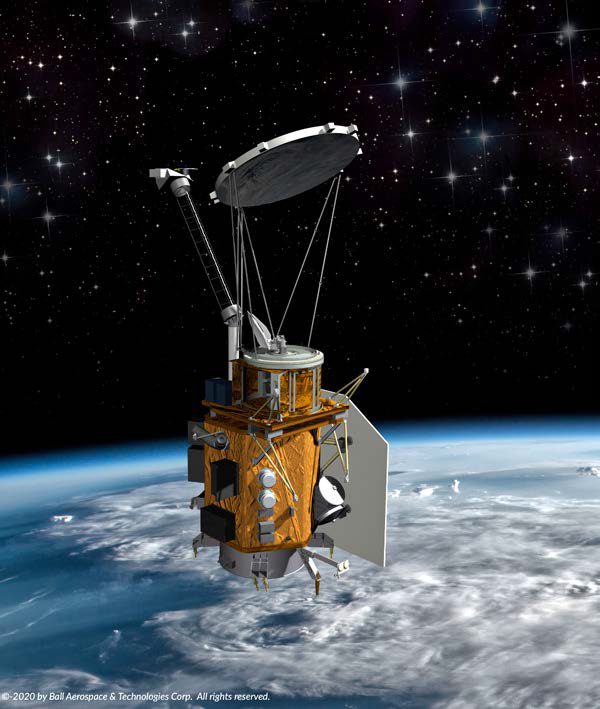
Artistic rendition of the USSF WSF-M satellite
on-orbit, courtesy of Ball Aerospace.
Under the leadership of the SSC Space Sensing’s Environmental and Tactical Surveillance program office, the WSF-M satellite is the first of two satellites that Ball Aerospace will deliver.
This innovative spacecraft represents a new era in the U.S. Space Force’s next generation of modernized, space-based environmental monitoring (SBEM) systems that will augment capabilities provided by the legacy Defense Meteorological Satellite Program (DMSP).
WSF-M will enable the production of enhanced weather prediction and analysis capabilities for joint warfighters conducting mission planning and operations globally.
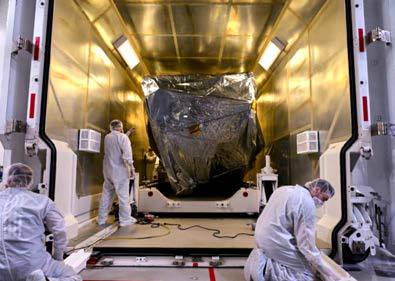
The WSF-M satellite prepares to be unloaded
from its cargo carrier. U.S. Space Force photo by
Airman 1st Class Ryan Quijas.
“This delivery represents a major milestone for the WSF-M program and is a critical step towards putting the first WSF-M satellite on-orbit for the warfighter,” said Col. Daniel Visosky, senior materiel leader, SSC’s Space Sensing Environmental and Tactical Surveillance program office. “It represents a long-term collaboration and unity-of-effort between the Space Force and our combined teams at Ball Aerospace, support contractors and government personnel.”
“The WSF-M satellite is a strategic solution tailored to address three high-priority Department of Defense SBEM gaps – specifically, ocean surface vector winds, tropical cyclone intensity, and energetic charged particles in low Earth orbit,” said David Betz, WSF-M program manager, SSC Space Sensing. “Beyond these primary capabilities, our instruments also provide vital data on sea ice characterization, soil moisture, and snow depth.”
Space Systems Command is the U.S. Space Force’s field command responsible for acquiring, developing, and delivering resilient capabilities and groundbreaking technologies to protect our nation’s strategic advantage in and from space and manages an $15.6 billion space acquisition budget for the Department of Defense.
MARSS advances critical infrastructure protection
MARSS will deliver and commission up to 40 of the firm’s RADiRguard high security surveillance units for a critical infrastructure site in the Middle East, as part of a significant contract valued at $5.5 million.

This latest phase builds on a multiyear program delivered by MARSS since 2018 at the same site. Working as the scheme’s primary contractor and technology partner,
MARSS will manage the integration of up to 40 new RADiRguard units with existing MARSS systems and other legacy sensors, alongside its NiDAR platform, to provide unparalleled 24/7 autonomous monitoring, detection, tracking and decision support in the event of a security incident.
The site’s security area will also be expanded under the project, with the latest RADiRguard units providing enhanced coverage and protection of the wider perimeter.
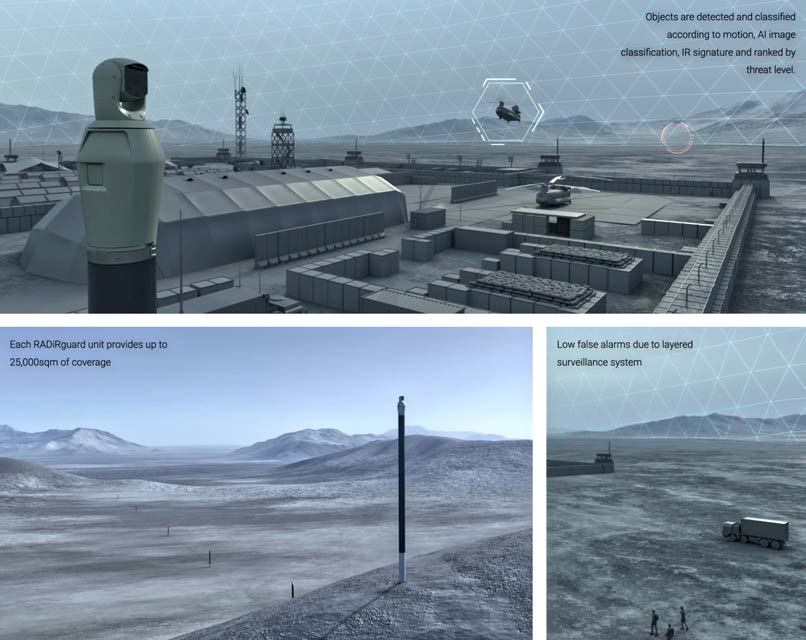
There will also be an upgrade to the existing control room, accompanied by plans that ensure business continuity.
The installation phase, scheduled for 2024, followed a year of designing and refining the project to meet the latest set of requirements, including a need for flexibility, scalability, adaptability and efficiency.
Fully integrated with MARRS’ sensor-agnostic NiDAR platform, this system will significantly reduce the burden on operators by consolidating all sensor data onto a single screen. This streamlined approach would allow a single security member to effectively monitor the entire system, as well as coordinate any response to potential threats.
RADiRguard will provide surface detection, identification and classification of land-based threats across multiple site zones.

The flexibility of the NiDAR suite means it can also suggest or automate responses based on the sensitivity of different areas.
MARSS’ regional team has been – and will continue to be – a hands-on, flexible and adaptable source of support throughout the project’s lifecycle. The team has navigated specific site challenges — such as limited working hours — and has helped the customer overcome specific challenges, sourcing and delivering additional RADiRguard units at short notice.
Fahad Alayadhi, MARSS Senior Project Manager, said, “RADiRguard provides an invisible fence. Anything entering this site will be detected, identified, and classified in real time by MARSS’ NiDAR platform. This allows the operator to choose the most appropriate response, with NiDAR even able to recommend the best recourse for the detected threat. The project has been made possible because of the passion of the MARSS team from its regional headquarters in the KSA. No other organization is able to deliver and commission security solutions, at the speed and quality needed, to protect critical sites, bases and borders from persistent, ever-evolving threats.”
NSA + partners spotlight People’s Republic of China (PRC) targeting of U.S. critical infrastructure
The National Security Agency (NSA) has joined partners to issue a Cybersecurity Advisory (CSA) to address People’s Republic of China (PRC) targeting of U.S. critical infrastructure.

The CSA, entitled “PRC State-Sponsored Actors Compromise and Maintain Persistent Access to U.S. Critical Infrastructure,” is led by the Cybersecurity and Infrastructure Security Agency (CISA) in partnership with NSA, the Federal Bureau of Investigation (FBI) and additional government agencies.
The CSA focuses on PRC-sponsored cyber actor, Volt Typhoon, targeting IT networks of communications, energy, transportation, water, and wastewater organizations in the U.S. and its territories.
The authoring agencies recognize the reality that the PRC has already compromised these systems. In some cases, the cyber actors have been living inside IT networks for years to pre-position for disruptive or destructive cyberattacks against operational technology (OT) in the event of a major crisis or conflict with the United States.
“This is something we have been addressing for a long time,” said Rob Joyce, NSA’s Director of Cybersecurity and Deputy National Manager for National Security Systems (NSS). “Our insights on PRC pre-positioning have driven action across the cyber community. We have gotten better at all aspects of this, from understanding Volt Typhoon’s scope, to identifying the compromises likely to impact critical infrastructure systems, to hardening targets against these intrusions, to working together with partner agencies to combat PRC cyber actors.”
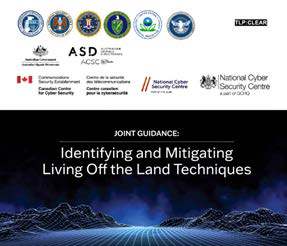
The CSA notes Volt Typhoon’s choice of targets and pattern of behavior are not consistent with traditional cyber espionage or intelligence gathering. Their ability to access OT could allow the group to disrupt OT functions across multiple critical infrastructure entities.
This report is paired with a technical guide, also released today, entitled “Identifying and Mitigating Living Off the Land (LOTL).” LOTL is a technique often used by Volt Typhoon to access and embed undetected in existing systems.
Visit the NSA’s full library for more cybersecurity information and technical guidance.
True Anomaly’s 1st Jackal AOVs are ready for launch at Vandenberg SFB
True Anomaly‘s first two Jackal autonomous orbital vehicles (AOVs) have arrived at Vandenberg Space Force Base and have completed functional testing, fueling, and mating to the SpaceX Falcon 9 Rideshare plate.

The satellites are officially ready for launch as part of SpaceX’s Transporter-10 mission no earlier than March of 2024.
Once on orbit, True Anomaly will commence with “Mission X”—what the company has internally dubbed the flight test and demo of the first two Jackal AOVs. The Jackals will capture high-resolution images and full-motion video (FMV) of one another while maneuvering in close proximity. This type of activity, known as rendezvous and proximity operations (RPO), is one of the most challenging space missions to master.
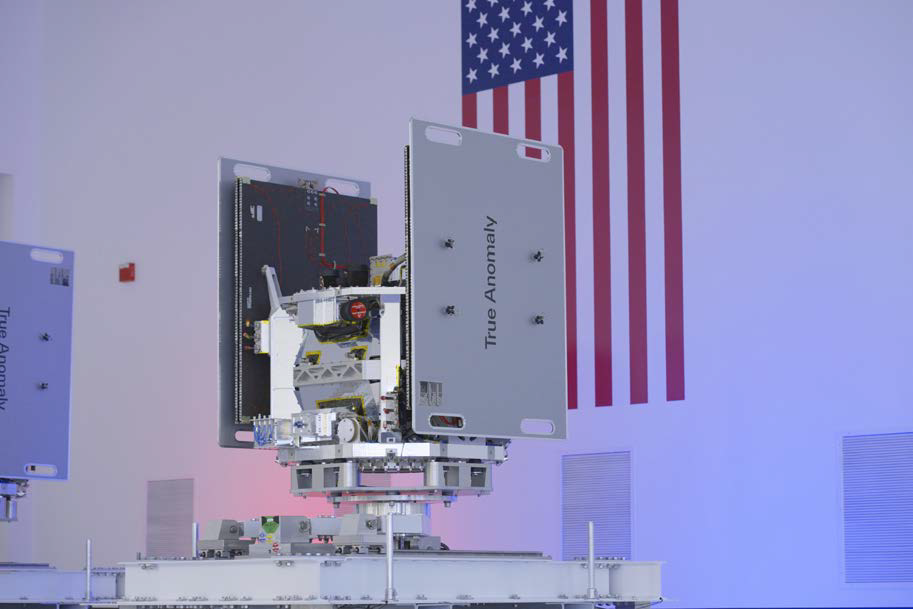 A mission-ready Jackal autonomous orbital vehicle (AOV) in the GravityWorks clean room, on January 30, 2024, Centennial, Colorado.
A mission-ready Jackal autonomous orbital vehicle (AOV) in the GravityWorks clean room, on January 30, 2024, Centennial, Colorado.
The goals of Mission X are to demonstrate RPO for advanced non-Earth imaging, test and evaluation, and on-demand training. With this milestone, True Anomaly is one step closer to delivering space capabilities that support deterrence and secure space for future generations.
“What the True Anomaly team has accomplished in just under 18 months is incredible,” said Sean Ozdemir, Director of Spacecraft Development. “What began with a white board and three-person team working in a small office above a coffee shop has transformed into a 35-person spacecraft team with exceptional breadth and depth of industry expertise. Not only did the team build two complex and capable ESPA-class spacecraft—they stood up the production process, in-house test facilities, and built the factory in parallel. I’m extremely proud of this team for accomplishing this milestone and look forward to soon validating our capabilities on-orbit.”
“Not all spacecraft fit into the binary designations of ‘expensive and effective’ or ‘inexpensive, but compromised,’” said Even Rogers, True Anomaly CEO and Co-Founder. “With the Jackal AOV, we’ve designed an attritable system with which we can iterate quickly and build rapidly at scale without compromising on mission effectiveness. This is a new class of space vehicle, purpose-built for national security space missions. It was designed for operators, by operators in partnership with world-class engineers. I could not be prouder of our team for designing, building, and testing two novel spacecraft in record time without sacrificing on excellence and quality. We acknowledge that the hard proof lies ahead of us as we look toward the Jackals’ first orbital flight and tech demonstrations. Go, Jackal. Go, True Anomaly. Go, U.S. Space Force!”
U.S. DoD first to order the new Ovzon T7 mobile satellite terminal
Ovzon has received the first order for the new Ovzon T7 mobile satellite terminal (photo above) from the United States Department of Defense (U.S. DOD) — this order will represent the first delivery of this mobile satellite terminal.
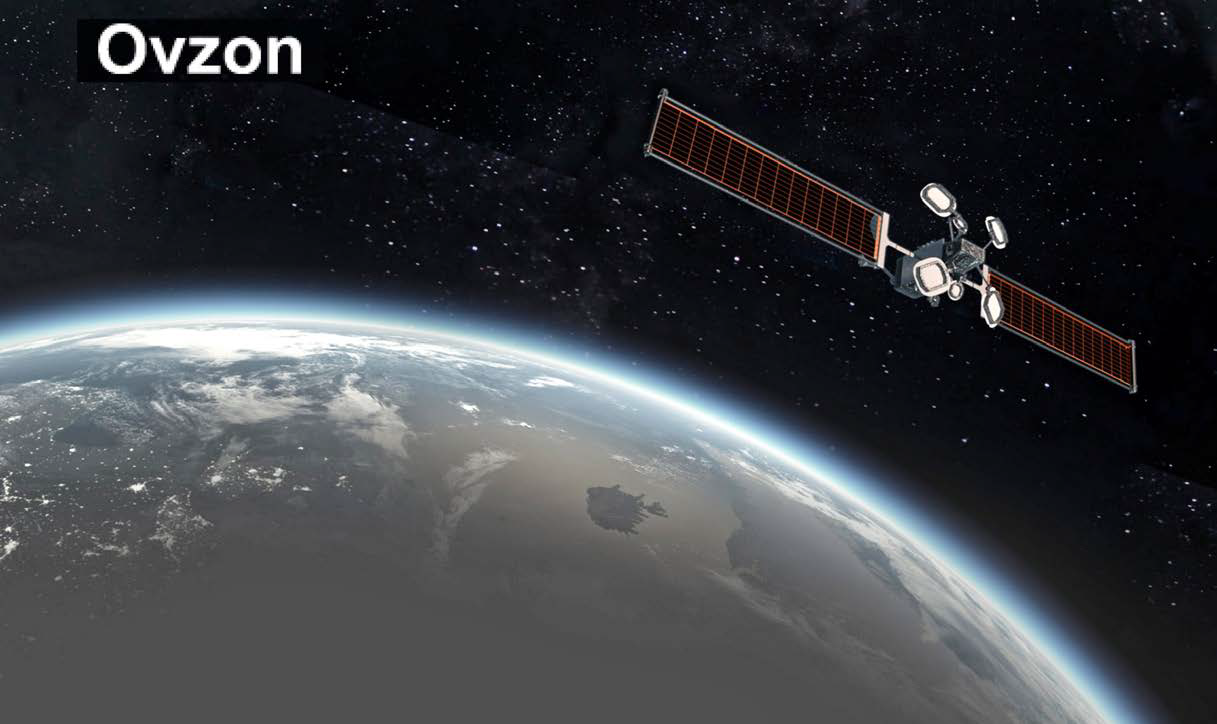
According to the company, the Ovzon T7 mobile satellite terminal is the smallest, lightest, most powerful and easiest-to-use satellite terminal in the industry.
At just 2.8 kg/6.2 lb it can fit into a very small backpack and facilitates fast, easy, and instant connection in all environments regardless of weather conditions.
The Ovzon T7 is the first Ovzon mobile satellite terminal designed and produced for operation on the Ovzon 3 satellite’s On-Board-Processor, and is capable of taking full advantage of its resiliency features specifically designed for a contested environment.
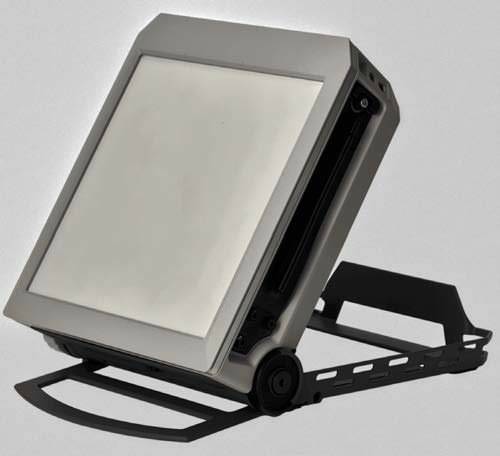
Using the Ovzon On-Board-Processor, the Ovzon T7 will be capable of frequency hopping, below the noise floor signalling, and operating independently of a teleport.
“We are delighted to see the first sale of the Ovzon T7 mobile satellite terminal to the U.S. DOD, and we are excited to bring on line the “near peer” capability the Ovzon T7 will deliver when operating on the Ovzon 3 satellite and the Ovzon On-Board-Processor. The Ovzon T7 is the perfect combination of performance, mobility and resiliency in an incredibly small package and will change the way critical missions are executed by elevating Ovzon’s SATCOM-as-a-Service to new dimensions,” said Ovzon’s CEO, Per Norén.
Ovzon offers world-leading mobile satellite communications services, SATCOM-as-a-Service, to customers across the globe. The services combine high data speed with high mobility. Ovzon’s SATCOM-as-a-Service meets the growing demand for global connectivity for customers with high performance and security requirements such as Defense, Emergency Services, NGOs, Media and Commercial organizations. Ovzon was founded in 2006 and has offices in Stockholm, Sweden, Herndon, VA and Tampa, FL in the USA. Ovzon is listed on Nasdaq Stockholm Small Cap.


